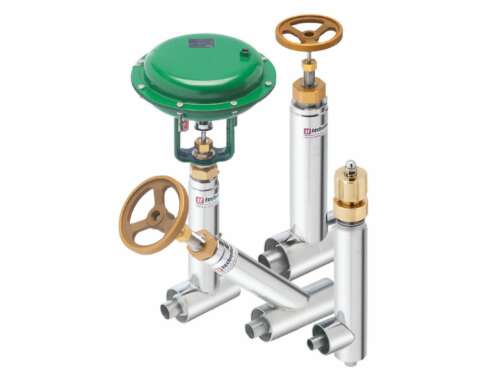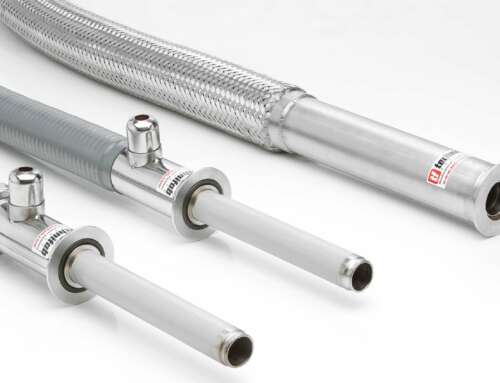Cryogenic equipment has revolutionized many industries, from medical research to industrial manufacturing. But what exactly is cryogenic equipment, and what facts do you need to know about it? Many industries rely heavily on cryogenic equipment because it makes it possible to store and move materials at very low temperatures. In this blog, we’ll discuss the main features of cryogenic equipment, including Cryogenic Equipment manufacturers, cryogenic installation services, operation, safety precautions, and the necessary specialist maintenance.
Cryogenic Equipment Manufacturer: Innovation and Excellence
There are some companies that specialize in developing and building Cryogenic Equipment Manufacturers that can withstand high temperatures and meet strict safety standards. Technifab is one such manufacturer that employs cutting-edge engineering principles and technology to create reliable equipment that can handle the challenges posed by cryogenic environments.
Precise engineering is necessary for cryogenic equipment throughout the design and manufacturing process to guarantee structural integrity under hostile conditions. Manufacturers employ stringent quality control techniques to ensure the equipment meets international safety standards. Moreover, these companies regularly collaborate with academic institutions to stay on the cutting edge of cryogenic technology and to adapt continuously to the shifting demands of industries that rely on low-temperature applications.
Essential Services for Cryogenic Installation: Accuracy and Safety
Cryogenic installation services are necessary to guarantee the equipment operates safely and optimally. The intricacies of cryogenic systems necessitate specific expertise and abilities during the installation procedure. Trained professionals in this industry adhere to stringent norms and protocols to avert mishaps and guarantee the equipment’s longevity. Technicians handling cryogenic components during installation must take great care to make sure all connections are tight and leak-free. Maintaining the low temperatures required for material storage and transportation requires proper insulation to avoid heat infiltration. To emphasize the need to be ready for unanticipated events, installation services also include establishing safety measures and emergency procedures.
Vital Cryogenic Equipment Manufacturers: Precision and Endurance
Cryogenic manufacturers specializing in producing equipment that can endure and maintain extremely low temperatures are at the core of the cryogenic sector. These producers are essential partners for many sectors because it is their job to develop, engineer, and produce equipment that can withstand the difficulties presented by cryogenic temperatures.
Modern cryogenic manufacturing uses cutting-edge materials and technology that meet the demands of efficiency, dependability, and longevity. The development of cryogenic equipment requires careful engineering, advanced alloys, and insulating materials. These producers ensure their goods satisfy the strict specifications of various applications by abiding by strict quality standards and laws.
Used for Low-Temperature Storage and Transportation
Cryogenic equipment can be used for storing and transporting items at temperatures that traditional refrigeration systems cannot achieve. By using extremely low temperatures below -150 degrees Celsius (-238 degrees Fahrenheit), the equipment allows the preservation of items in their desired state. This is particularly useful for items that require cryogenic storage to maintain their properties.
Liquid helium, liquid nitrogen, and liquid oxygen are the cryogens that are most frequently employed for storage. Utilizing these materials allows for the achievement of low enough temperatures to preserve biological samples, medicinal supplies, and even rocket propellants. Conversely, Cryogenic Transfer Hoses use specific containers and trucks to keep their temperature low while traveling. This capacity is essential for businesses like pharmaceuticals, where maintaining the integrity of temperature-sensitive medications is critical.
Revolutionizing Industries: Cryogenics’ Vital Material Transport and Preservation Applications
Transporting and handling materials at extremely low temperatures—typically below -150 degrees Celsius—is the primary use for cryogenic technology. Liquid helium, liquid nitrogen, and liquid oxygen are the most often utilized fluids as cryogens. Cryogens protect organic compounds used by pharmaceutical and therapeutic businesses. They store and transport condensed flammable gas (LNG) for the energy sector and conduct ultra-low temperature tests for research.
It is possible to protect materials without jeopardizing their integrity because of their capacity to withstand such low temperatures. Cryogenic equipment is essential for storing natural samples, vaccines, and other temperature-sensitive medical goods in the healthcare business. The ability of the modern world to move and store gases safely and effectively is fundamentally based on cryogenic innovation.
Used in a Variety of Industries
Cryogenic equipment is a highly versatile and essential invention that finds its use in numerous businesses. Experts in restorative medicine utilize cryogenic coolers to preserve vaccines, natural specimens, and other therapeutic supplies that are highly sensitive to temperature. These materials are protected for a long time because of their capacity to withstand extremely low temperatures.
The food industry has been using cryogenic freezing to preserve perishable goods for a long time. Cryogens are the preferred choice for freezing food as they help keep the food’s surface and texture intact, ensuring that its quality and freshness are maintained during the freezing process.
In the energy sector, cryogenic equipment is also valuable, particularly for the liquefaction and transportation of gaseous fuel. By facilitating the efficient storage and transportation of massive volumes of gaseous fuel, cryogenic innovation plays a critical role in the global energy production network. Cryogenic gear is essential for a variety of industries for these reasons.
Safety is a Top Priority
Due to the extremely high temperatures involved, safety is crucial when handling and using cryogenic equipment. Cryogens can explode when heated due to their fast expansion and the potential for severe burns or frostbite. Taking precautions to reduce these dangers is a top priority for manufacturers and users.
Advanced monitoring and control systems, emergency shutdown mechanisms, and pressure relief valves are examples of safety measures found in cryogenic equipment. Employees working with cryogenic equipment undergo extensive training to learn how to handle emergencies and recognize possible risks. Protective equipment like face shields and insulated gloves is crucial when taking cryogens.
Frequent safety audits and inspections guarantee that the machinery conforms to industry norms and laws. Efficient labeling and recordkeeping are essential in reducing the potential hazards linked to cryogenic items. Beyond the original installation, there is a continued commitment to safety through updates and training programs to address new safety issues.
Specialized Maintenance and Upkeep
To maintain cryogenic equipment, strict adherence to maintenance schedules and specialized knowledge are necessary. Routine inspections are designed to find possible problems early on and fix them.
Ensuring the machinery runs within safe bounds entails monitoring pressure levels, examining valves and seals, and checking the insulation for integrity.
Preventive maintenance is essential to extending the lifespan of cryogenic equipment because it frequently operates in severe settings. Manufacturers collaborate closely with maintenance specialists to provide thorough maintenance guidelines. Periodic equipment shutdowns for comprehensive inspections, repairs, and upgrades may be necessary.
To maintain safety standards, alterations or repairs must be completed by qualified experts in addition to periodic maintenance. Thorough documentation of maintenance activities is crucial for traceability and industry compliance. Maintenance staff members receive regular training on the newest technology and best practices for maintaining cryogenic equipment.
Final Words
Cryogenic equipment is essential to many businesses because it allows materials to be transported and stored safely at very low temperatures. The effectiveness and safety of cryogenic systems greatly depend on the actions of Cryogenic Equipment Manufacturers, installation companies, users, and maintenance specialists. The cryogenic sector is at the forefront of innovation as technology advances, continuously changing to fulfill the various needs of a wide range of applications.



